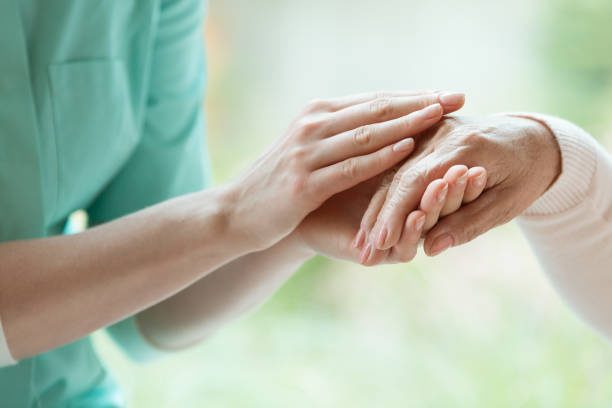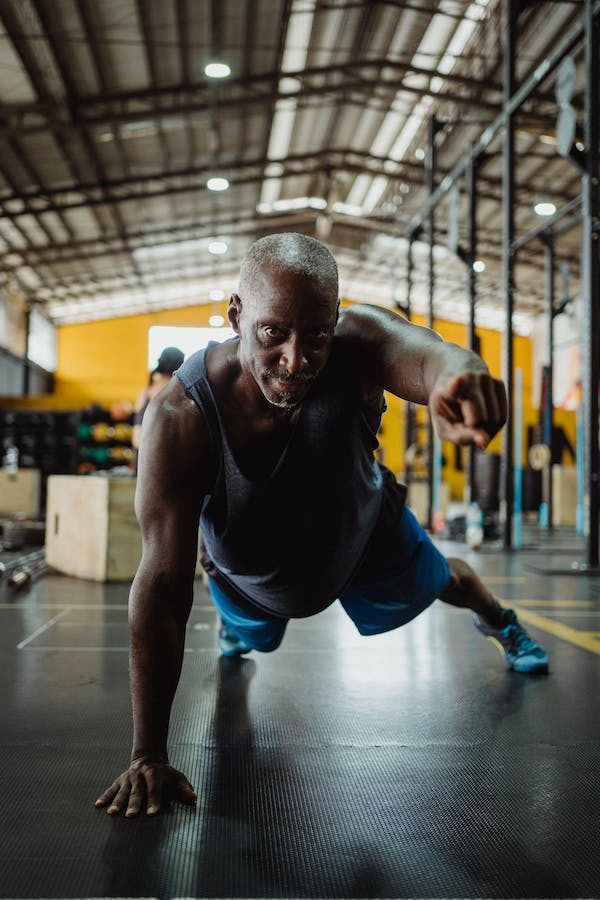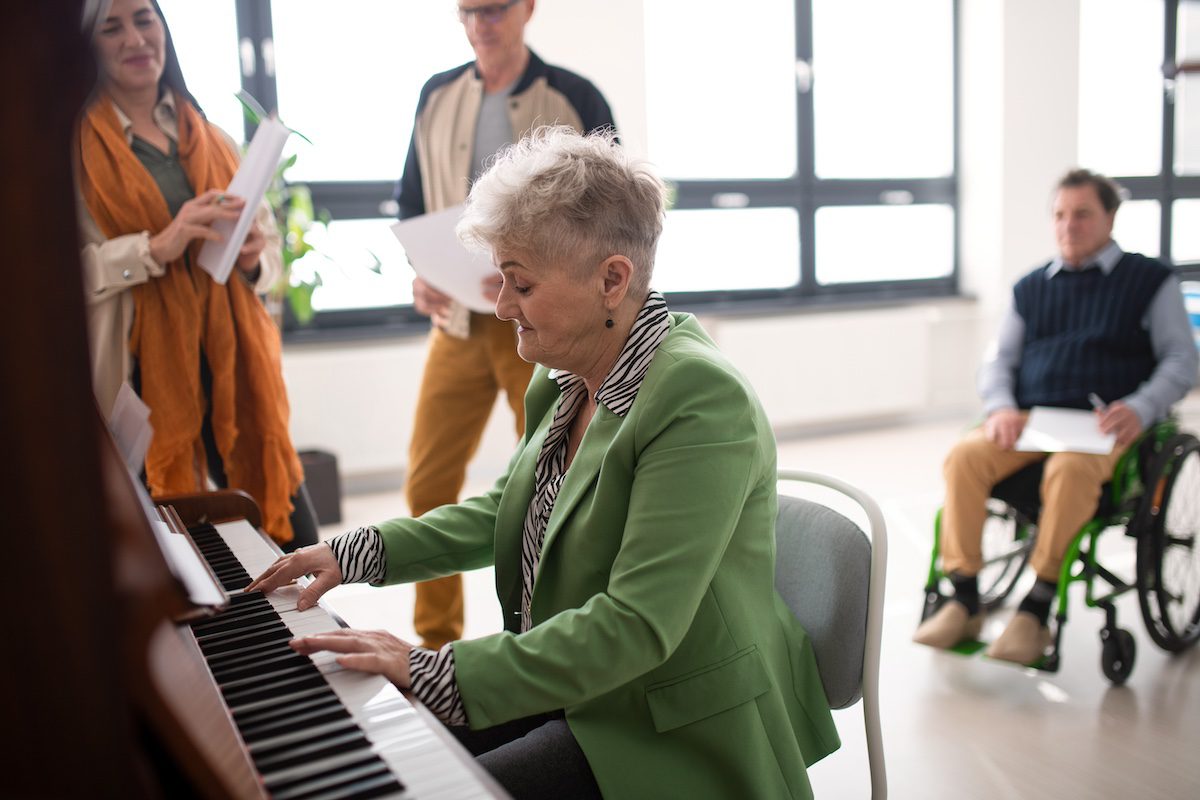Exercise For Mind, Body, and Soul
Hospice care can be an invaluable part of building muscle and preventing accidents. Hospice professionals provide physical, mental, emotional, and spiritual support for people with terminal illnesses, helping them to cope with their conditions more comfortably and effectively. This type of care can also have important benefits for those wishing to build muscle, as hospice helps patients maintain functional abilities, cope with pain and reduce the risk of falls and other accidents. Furthermore, hospice professionals help patients stay as active as possible within their physical limitations. This can include activities like gentle stretching, walking, and light weightlifting exercises that can help build muscle strength and prevent accidents from occurring. Additionally, hospice professionals can provide valuable advice on nutrition, safety, and injury prevention that is tailored to the individual’s needs. For those looking to build muscle and reduce the risk of accidents, hospice care can be an invaluable resource.

Workouts
In addition to hospice care, there are many other exercises that can help build muscle and reduce the risk of accidents. Here are 10 of the top workout exercises that can do both.
- Squats: This exercise engages multiple major muscle groups of the legs, helping to build strong and stable muscles that protect against falls.
- Push-ups: Push-ups help strengthen the chest, shoulders, arms, and core for improved stability and balance when performing other activities.
- Lunges: Lunges are great for building leg muscles and improving balance, which is an essential component of avoiding falls.
- Step-ups: This exercise works the lower body and core muscles, helping to increase stability while performing activities like climbing stairs or getting out of chairs.
- Planks: This powerful core exercise strengthens the muscles of the midsection, which helps maintain balance and reduce the risk of falls.
- Bicep Curls: This exercise helps build muscle in the upper arms, providing added stability during activities like reaching and lifting.
- Lat Pulldowns: This exercise strengthens back muscles, helping to improve posture and reduce strain on the shoulders and spine.
- Tricep Extensions: This exercise works the muscles of the back of the arms, helping to reduce strain on elbows and wrists while performing activities like pushing and carrying.
- Shoulder Presses: Working out your shoulder muscles helps improve overall body stability when moving around or lifting heavy objects.
- Mountain Climbers: This exercise targets the core and leg muscles, both of which are essential for maintaining balance and preventing falls.
Physical Activities


Outside of working out, there are physical activities that will help with the needed muscle building and care for many hospice patients. Here are some of the top ones.
- Chair Exercises: Chair exercises are low-impact and can be done from the comfort of a hospice patient’s own chair. Some beneficial chair exercises include arm circles, shoulder shrugs, and leg lifts. These simple movements can help strengthen muscle tone with minimal effort.
- Tai Chi: Tai chi is a Chinese martial art that combines meditation with slow, controlled movements. It is gentle enough for hospice patients and can be adapted to their individual abilities. The purpose of tai chi is not only to build muscle strength but also to improve balance and joint flexibility.
- Gentle Walking: If hospice patients are able, they can benefit from taking short walks around the hospice building or even outdoors with the help of a caregiver. Walking can strengthen leg muscles and improve balance.
- Yoga: Hospice patients may find yoga to be an engaging physical activity that helps build muscle strength, flexibility, and range of motion. There are many types of yoga, so hospice patients should talk to their hospice provider about what kinds of poses would be suitable for them.
- Swimming: If hospice patients have access to a pool, swimming can be an excellent form of exercise for building muscle strength in a low-impact environment. The buoyancy of the water will reduce any strain on joints and can help hospice patients move more freely than if they were exercising on land.
Are There Exercises To Stay Away From?
Exercising can be a great way to stay active and healthy, but some exercises should be avoided while in hospice. It is important to consult with hospice staff or a physician before starting any form of exercise. Exercises to avoid in hospice include activities that require intense physical exertion such as running, weight lifting, jumping, and high-impact sports. These activities can cause strain or exhaustion and should be avoided. Other exercises, such as yoga or stretching, are generally safe to do while in hospice, provided they are done gradually and at a level that is comfortable for the patient. Additionally, swimming may also be beneficial if it can be done safely in a pool or other body of water.
The hospice environment is designed to make the patient feel as comfortable as possible, so it is essential that any physical activity undertaken does not cause them further discomfort or stress. It is also important for hospice staff to be aware of any potential risks associated with physical activity and adjust the patient’s exercise plan accordingly. By ensuring that hospice patients are exercising in a safe and comfortable way, hospice staff can help keep them as healthy and active as possible.
How Do You Encourage Exercise?
Many patients may resist the idea of exercising and staying physically active when in hospice care, especially if they are dealing with a terminal illness or facing end-of-life. They may wonder what the point is, or they may be in a depressive state. Remember that physical exercise does need to be in conjunction with emotional, mental, and spiritual care for a whole-body experience.
Exercise can be a powerful tool for hospice patients, especially those facing terminal illnesses or end-of-life situations. Even when hospice patients are too weak to get out of bed, exercising can help them maintain their strength and energy levels and improve their quality of life. Here are some tips for encouraging hospice patients to exercise:
- Make exercise fun: Exercise doesn’t have to be a chore. Bring family or friends in for an exercise session, or set up music and games that hospice patients can enjoy while moving.
- Offer gentle encouragement: Let hospice patients know you are there to support them and that it is ok if they don’t feel up to exercising on a certain day. Showing hospice patients that you care and understand makes them more likely to exercise when possible.
- Try different types of exercise: Not all hospice patients can do the same exercises. Consider low-impact activities like chair aerobics, yoga, or tai chi that hospice patients can do from the comfort of their bed or wheelchair.
- Focus on structure and routine: Exercise is more effective when hospice patients commit to doing it regularly. Incorporate exercise into a hospice patient’s daily routine and make sure there is someone available to ensure hospice patients are exercising safely and not overdoing it.
This isn’t an instant process. Be sure to be patient in getting to a level when all are in a comfortable and consistent mode of physical activity.
Well-Being Is The Goal


Hospice care is an invaluable service in providing medical, psychological, and spiritual support to individuals facing terminal illnesses. While hospice patients require specialized attention, they still need to maintain physical well-being. This can be achieved through proper nutrition, exercise regimens tailored for their condition and regular doctor visits to monitor changes in health. With hospice care, patients can remain physically active and independent for as long as possible during their hospice journey. Ultimately, hospices provide the necessary means for each patient to live out their last days with dignity and peace of mind knowing that their physical needs are being taken care of. By recognizing the importance of physical well-being, even in frail hospice patients, we can ensure that hospices continue to provide the highest quality of care to those they serve.



